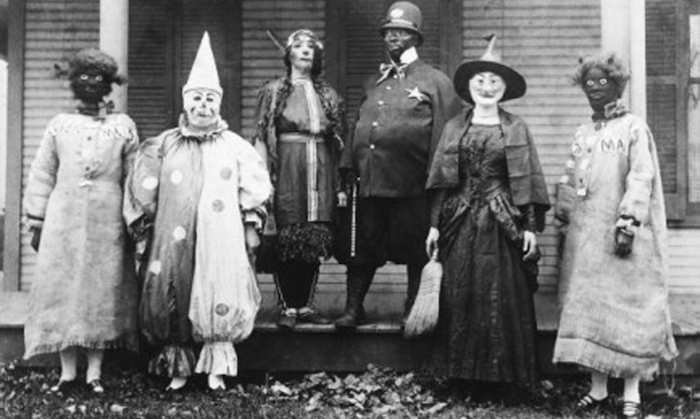
Halloween is a time to celebrate the spooky, the scary, and the frightening. A reason for kids to don masks and demand candy from neighbors, and an excuse for some adults to dress in outlandish, sexy, or terrifying guises that would not be socially acceptable the rest of the year. A night for monsters to wander and for ghosts to appear. Whether an innocent day of fun, or a night full of fear, Halloween is for the darker side. But long before the trick or treating, the haunted houses and the ghost stories, there was another day. Before the cross came to the shores of Ireland, the pagan people prayed to their own gods, and feared their own spirits. Before Halloween, the pagans had Samhain. The pagan holiday from the old world, like the ghosts of Halloween, did not die, but lives on and rises again and again in even our most modern traditions.
Samhain, pronounced sa-when, comes from Irish Gaelic for “summer’s end” and was the Celtic people of the British Isles’ New Year’s Eve. It marked the last day of their year and summer, and the beginning of their new year and winter. To the Celts, this lent the evening to being a liminal period, or a time of transition. The veil between worlds became thinned and more easily crossed. Spirits and demons could come to our world and roam freely. People would leave offerings of fruit and wine outside their door to keep these spirits from bringing the family and livestock misfortune. With the doorway between dimensions at its widest point, the dead could also freely move to our realm. Families would set an extra place for dead relatives, and special fires would be lit to guide these risen souls safely. But it wasn’t just the realm of the dead that could utilize this blurring of the borders, but the living, too. Holy men and women would use Samhain to divine the future, speak to the dead, and spy on the living using mirrors.

As Christianity took hold of Europe, the war on paganism was never ending. The church stomped out what it could, and absorbed what it couldn’t. The folk practices of Samhain wouldn’t be extinguished, so they merely masked them. Pope Boniface declared the 1st of November “All Saints Evening.” This became a Christian holy day to celebrate all the dead saints and their works. Another term for a saint was a “hallow,” a word used commonly in religion when something is deified. The night became known as “All Hallows Evening.” The term, over time, contracted to Allhallowe’en, until finally Halloween. Christianity also incorporated a lot of the pagan beliefs that the spirits walked the earth at this time. In parts of England, it was believed that the souls in purgatory would come to earth on this day, so family members would light fires to help guide them home.

Samhain also marked the end of the harvest season, a time celebrated in most agrarian societies. Because of this it was easily integrated into different autumn traditions throughout its history, and incorporated various symbols of the harvest. We see pumpkins as a major symbol of the holiday, as well as corn (candy corn, and corn mazes in the States) and hay (haunted hay rides, also in the States.) And nowhere else do we see this more than with the jack o’ lantern.

The legend varies, but the most common telling of the origin of the carved pumpkin was that of Jack, too evil for heaven, but too good for hell. A soul rejected from the afterlife, he wandered the land of the living. And on All Hallows Eve, Samhain, the living would carve out turnips and potatoes and fill them with candles to light his way, helping him to find his path.

In other parts of the British isles, bonfires were lit to help guide the spirits, and became social events for the community. Children would dress in disguise to ward off the roaming spirits, possibly so they wouldn’t be mistaken as one of the spirits themselves. This tradition, known as mumming, gave root to guising. These costumed children would go to houses to collect the offerings meant for the wandering ghosts. This gave foundation for our contemporary practice of trick or treating.

The 19th century saw a push to make Halloween a more family friendly, community event. This was particularly seen in America, where halloween has since flourished and is closely associated with childhood fun and games. Now a commercial institution in much of America and the UK, Halloween has not forgotten its pagan roots fully, nor has it forgotten the dark and the dead.














